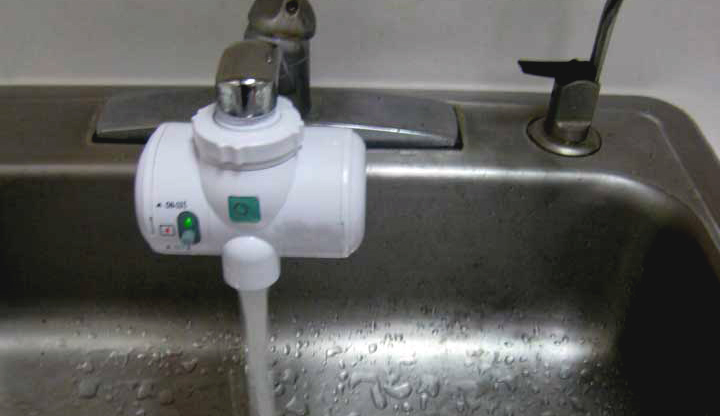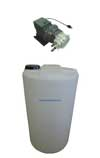Bacteria Killers: A Guide to Popular Water Disinfectants


Hello again, Clean Well Water Report readers! As you may have read yesterday, we are devoting this week to discussing CT values. Yesterday we explained how CT values are calculated, and why they're crucial to determine when disinfecting home water supplies. Now that you know how to calculate CT values for various disinfectants, we want to elaborate a bit on some of the more popular disinfection methods:
Chlorine


Chlorine can be injected into your water in a gaseous, liquid, or solid form, though the latter two options tend to be the most popular for home water treatment.
In its solid form, chlorine is often dropped into a water supply via a chlorine pellet feeder. One advantage of solid chlorine pellets is that they are more easily handled than gaseous or liquid chlorine, however, chlorine pellet feeders are not as easily adjustable, and thus less precise than liquid chlorine at achieving a specific chlorine concentration.
As a liquid, chlorine bleach can simply be dissolved into water supplies, and easily filtered out later with a carbon filter. It is also very stable, allowing for bulk purchases and a long shelf life. Perhaps the only real drawback to chlorine bleach is that it can be mildly dangerous to handle and ingest in large amounts, and as such should be kept out of the reach of children, and away from food and combustible organic materials. Injecting liquid chlorine generally requires a metering pump, chlorinator, and solution tank, though contact tanks are often preferable to increase contact time (a very important factor in determining CT values).
Chloramine
According to the National Drinking Water Clearinghouse, “chloramines are formed when water containing ammonia is chlorinated or when ammonia is added to water containing chlorine.” Chloramine use at home can be advantageous because chloramines produce fewer byproducts, and have a reaction time of just a few minutes. However, chloramines are one of the weaker disinfectants – much weaker than free chlorine bleach. As such, it is best used as a secondary disinfectant to prevent the regrowth of bacteria in your water and plumbing. Chloramines require the same equipment as liquid chlorine: a metering pump, a liquid injection system, and a solution tank from which to draw the disinfectant. Likewise, chloramines are more effective when used with a retention tank to increase the contact time between the water and the disinfectant.
Hydrogen Peroxide
Hydrogen peroxide is a colorless, liquid peroxide (a compound with two oxygen molecules bound together in a single bond). Like chlorine and chloramine, it is a strong oxidizer with disinfectant properties. Hydrogen peroxide is used in the same way as chlorine and chloramine, the main difference being that hydrogen peroxide is generally more expensive than chlorine bleach, and leaves a residual that dissipates much more quickly. Thus, peroxide can be preferable for disinfecting water that will go to bathing or drinking supplies, while chlorine tends to be preferable for large distribution systems with many pipes. Injecting your water supply with peroxide is accomplished in the same way as with chlorine or chloramine.
Ozone
Ozone is an allotrope of oxygen (simply put, a different physical form of the oxygen element) containing 3 atoms to a molecule, as opposed to the regular 2. It is formed when dry air passes through a system of high voltage electrodes. Ozone is used as a primary disinfectant in many parts of the world, according to the National Drinking Water Clearinghouse, though it has been more slowly adopted in the U.S. Nevertheless, it is very effective due a shorter required contact time and lower dosage requirements than chlorine. Drawbacks, however, include instability – it can't be easily transported and thus must be generated onsite – and its inability to maintain a sufficient residual in water for continued disinfection due to its eventual dissolution back into O2.
Once you've decided which disinfectant is right for your application, check out the charts in yesterday's blog post (linked above) to determine the CT value you'll need to achieve for proper disinfection of your water. Then, check back tomorrow for some recommendations of our favorite disinfecting systems. Or, if you can't wait, have a look around our online store right now.
Don't forget, you can always e-mail us at support@cleanwaterstore.com with any questions or concerns you may have about these and other water and water treatment topics. Until next time, thanks for reading!
Recent Posts
Water Quality for Horses and Livestock: A Guide to Healthier Barns and Pastures
Clean water is the cornerstone of animal health and productivity. Whether you're raising horses, cattle,…
Clean Drinking Water for Cats: What Every Cat Owner Should Know
Why Clean Drinking Water Matters for Cats Hydration is critical to a cat’s overall health,…
Pet Hydration: What to Know About Water Safety
Clean Drinking Water for Dogs: What Every Dog Owner Should Know Clean drinking water is…
How to Ensure Fresh, Safe Water for Your Birds: Daily Care Tips for Bird Owners
Why Filtered Water for Birds Is Essential for Their Health Like food, clean drinking water…
U.S. Water Problems by Region: Common Contaminants & Solutions
Curious about U.S. water problems by region? Water quality isn’t just a national issue—it’s a…
Wildfire Water Contamination: How to Ensure Safe Water After a Fire
Wildfire Water Contamination: What You Need to Know After the Fires Drinking water contamination is…


